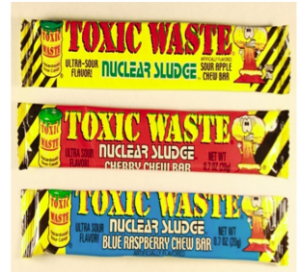Most of those candies are imported, mainly from four countries: Mexico, Malaysia, China and India. That’s where the candies come from, but what about the lead itself?
“It is not entirely clear where the lead in many of the products is coming from,” says Patrick Kennelly, the chief of the California Department of Public Health’s Food Safety Section. “But products containing tamarind or mined sources of salt from certain regions of the world may have a higher likelihood of having elevated levels of lead.”
Candies with chili powder may also have high lead levels, according to the Food and Drug Administration. One source of lead could be contaminated dirt in the fields where the peppers are grown. If the peppers are not thoroughly washed, the lead remains. Drying and processing the spice might also introduce high concentrations of lead. Other potential sources of lead in candy include the machinery used in the manufacturing process, candy packaging, and ink on wrappers.
In the first four months of 2012, the Department of Public Health has issued advisories about Vagabundo brand lollipops from Mexico and nine different types of sesame candies from India and Pakistan.
A little over a year ago, the department recalled the Toxic Sludge brand’s Nuclear Waste Chew Bars. Some of the candies had more than twice the acceptable amount of lead in them.
Public health officials worry about even small amounts of lead because, according to Kennelly, “There is no known safe blood lead level.” High levels of lead in the blood are especially dangerous for infants, children under the age of six, and pregnant women and their fetuses.
According to the DPH, in 2010, the most recent year for which data is available, nearly 2,300 California children tested positive for lead levels high enough to cause harm. With the new lead standards announced yesterday nearly 25,000 kids in California may have lead poisoning.
In 2005, the Orange County Register uncovered the problem of lead in Mexican candies in its investigative series Toxic Treats. The Register profiled Javier Bonilla of La Habra. He tested positive for lead poisoning and the source was tamarind candies that came in clay pots. His mother, Gloria Bonilla, told the Register, "If I had known, I wouldn't have given them to him."
Maria Perez of Sacramento, whose son’s blood levels were three times the CDC’s threshold at the time, told the Register, “If the candy has lead, they should make sure it doesn't come here. ... What else has to be done?"
After the series ran, the state legislature passed a law directing the DPH to regularly test candy for lead.
As part of its Lead in Candy program, the DPH collects a wide range of candies from store shelves and tests them for lead. To prevent candies with high lead levels from reaching consumers, the DPH works with manufacturers on voluntary recalls and distributes health alerts to the public and local health departments. Store owners who knowingly sell candy laced with lead face fines of up to $500 per violation.
As the recent recalls have shown, “the problem still exists,” says Kennelly. “But the level of lead contamination CDPH finds in candies appears to have reduced slightly over the years.”
